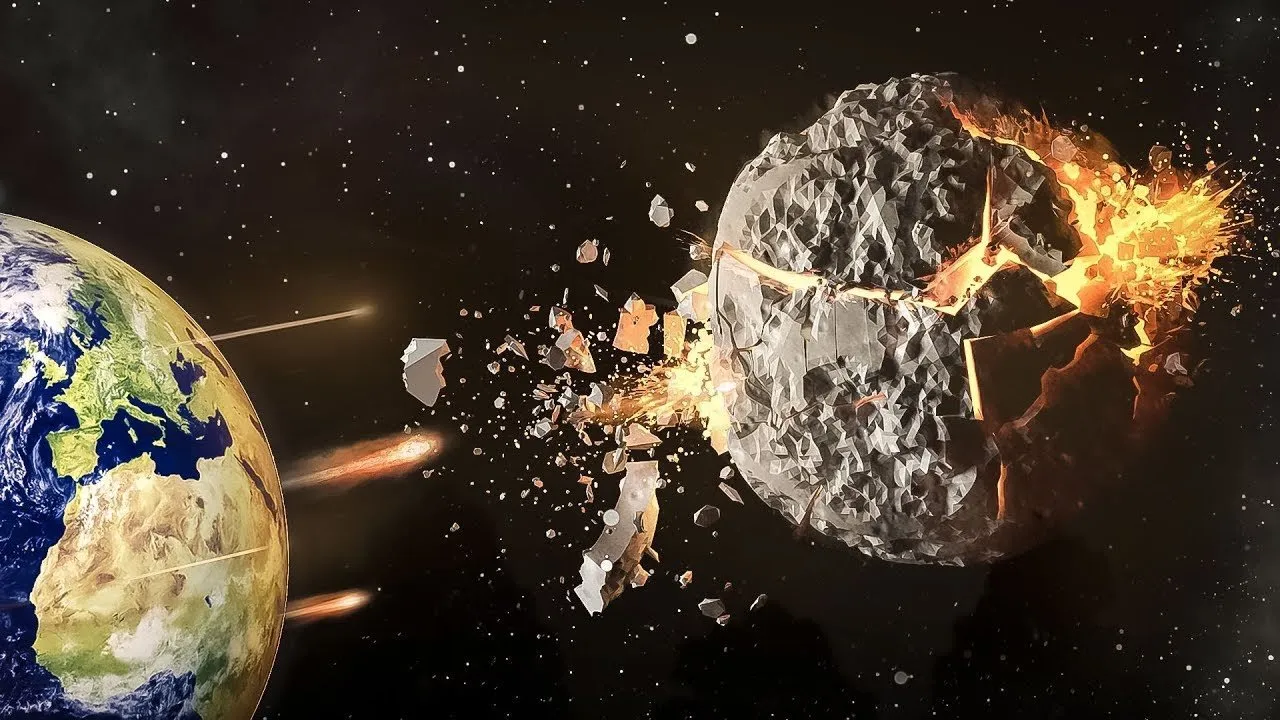What will happen if the Moon is destroyed? Let us assume, it is a solid body (in fact, it is not entirely solid), and something big hits it along a line passing through the center of mass of the Moon at a huge velocity and smashes it into pieces. According to the law of conservation of momentum, the momentum of the Moon plus the momentum of that something before the collision is equal to the momentum of all pieces of the Moon and that something that will form as a result of the collision. Remember that momentum is a vector value and, as such, it has magnitude and direction. So, the mentioned equality is for the vector sums of momenta.
Depending on the direction of that something, pieces of the Moon will gain or lose velocity in comparison with the velocity of the Moon before the collision relative to the Earth, which is around 1 km/s.

Image Credit
Now consider: At this velocity, the Moon orbits the Earth at the average distance of around 380,000 km from the Earth in a somewhat elliptical orbit. After the Moon falls apart, some parts of it may gain a higher velocity, others may lose a part of the velocity they had while being a part of the Moon. This means that most of the parts will continue orbiting the Earth, only their orbits will be different. Those pieces with lower velocity will have lower perigee, and those with higher velocity will have higher apogee. A few pieces may fall to the Earth, and a few may fly into the interplanetary space and start orbiting the Sun – depending on the energy and direction of the collision.
And yes, those pieces will exert gravitational attraction on each other. That attraction will introduce certain correction into motion of the pieces.
